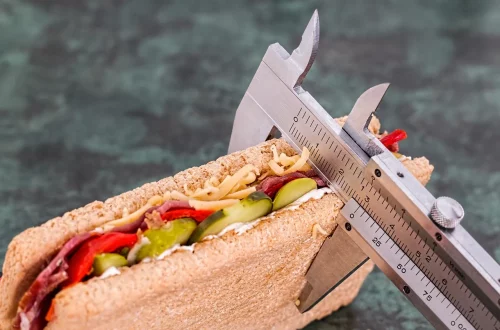
What to Do If You Clipped Your Dog’s Nail Too Short
Clipping a dog’s nails can be a nerve-wracking experience for many pet owners. The fear of cutting too short and causing pain can lead to anxiety during grooming sessions. While maintaining your dog’s nails is essential for their health and comfort, accidents can happen. If you’ve clipped your dog’s nail too short and it’s bleeding, it’s crucial to remain calm and take immediate action. Understanding the anatomy of a dog’s nail and the potential consequences of over-trimming is vital for every dog owner. This knowledge not only helps in managing the situation effectively but also prepares you for future grooming sessions. Moreover, knowing how to handle the situation can make a significant difference in your dog’s comfort and recovery.
In the following sections, we will discuss how to manage the bleeding, ways to comfort your dog, and prevention strategies for the future. The goal is to empower you with the knowledge and tools needed to ensure that your dog’s grooming experience is safe and stress-free.
Immediate Steps to Take After Cutting a Nail Too Short
When you accidentally clip your dog’s nail too short, the first immediate step is to assess the situation. If the nail is bleeding, it’s important to act quickly but calmly. Apply gentle pressure to the nail with a clean cloth or gauze to stop the bleeding. This can often be enough to control minor bleeding.
Next, you may want to use a styptic powder, which can help to quickly clot the blood. If you don’t have styptic powder, cornstarch can also serve as a temporary solution. Simply dip the bleeding nail into the powder and apply gentle pressure for a few minutes.
Keep in mind that some bleeding is normal and should stop within a few minutes. However, if the bleeding persists for more than 15-20 minutes, it may be a sign of a more serious problem, and you should consider seeking veterinary assistance.
While you’re managing the bleeding, ensure that your dog is in a comfortable position. Avoid making sudden movements or loud noises that might startle them. Talk to your dog in a soothing voice to help keep them calm during this stressful time.
After the bleeding has stopped, clean the area around the nail gently with soap and water to prevent any potential infection. Monitor the nail over the next few days, keeping an eye out for signs of swelling or discharge, which could indicate an infection. If you notice any concerning symptoms, consult your veterinarian for further advice.
How to Comfort Your Dog During the Healing Process
After a nail clipping accident, your dog may feel anxious or frightened. It’s essential to provide comfort and reassurance to help them recover emotionally as well as physically. Start by creating a calm and quiet environment where your dog can relax. Reducing noise and distractions can help them feel more secure.
Engage in gentle petting or soft spoken words to soothe your dog. You may also offer their favorite blanket or toy to help them feel more at ease. If your dog enjoys treats, a small reward can reinforce positive feelings and divert their attention from any pain they might be experiencing.
Keep an eye on your dog’s behavior over the next few days. Some dogs may be more sensitive about their feet being touched, so it’s essential to respect their boundaries. If they seem uncomfortable, give them space and approach them with care when you need to check on the affected nail.
In the healing process, it’s vital to maintain a routine that includes regular, gentle walks without too much pressure on the affected paw. This helps keep their spirits up while ensuring that the nail has time to heal properly.
If your dog appears to be in significant pain or shows signs of distress, don’t hesitate to reach out to your veterinarian. Understanding your dog’s body language will help you assess how they are feeling and whether further treatment is necessary.
Preventing Future Nail Clipping Accidents
Preventing future nail clipping mishaps requires a combination of education, preparation, and practice. Familiarize yourself with your dog’s nail anatomy, particularly the quick—the sensitive part of the nail that contains nerves and blood vessels. Knowing where the quick is located can help you avoid cutting too deeply in the future.
One effective way to prevent over-clipping is to trim your dog’s nails regularly, rather than waiting until they are overly long. Regular trimming ensures that the quick recedes, making it less likely that you will accidentally clip into it. If you’re unsure how often to trim, consult your veterinarian for guidance based on your dog’s breed and activity level.
Additionally, you may want to consider using nail clippers that are specifically designed for dogs. There are various types available, including guillotine-style and electric grinders. Experimenting with different tools can help you find the one that works best for you and your pet.
If you are uncertain about your nail-trimming skills, consider seeking professional help. Groomers are experienced in nail trimming and can show you the proper technique. You can also ask them to demonstrate how to trim your dog’s nails safely, allowing you to learn from their expertise.
Finally, make nail trimming a positive experience. Use treats, praise, and breaks to create a relaxed atmosphere. The more comfortable your dog feels with the process, the less likely accidents are to occur in the future.
In summary, clipping your dog’s nails can be a daunting task, but with the right knowledge and preparation, it can be done safely and effectively.
**Disclaimer:** This article is not intended as medical advice. If your dog is experiencing health issues or if you have concerns about their well-being, please consult a veterinarian for professional guidance.




